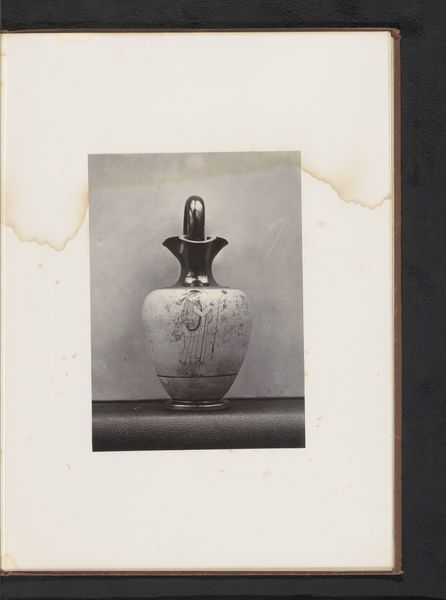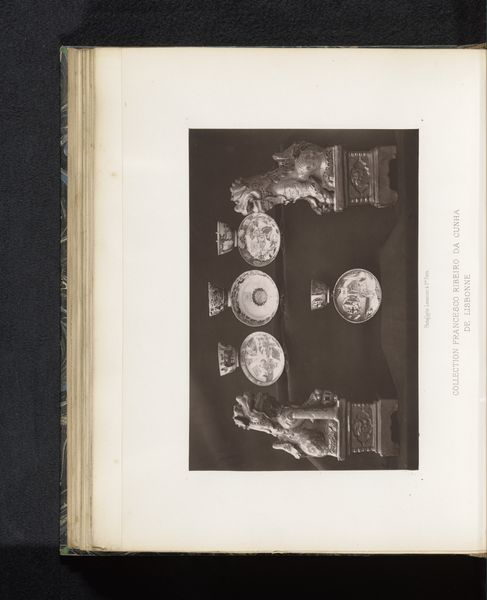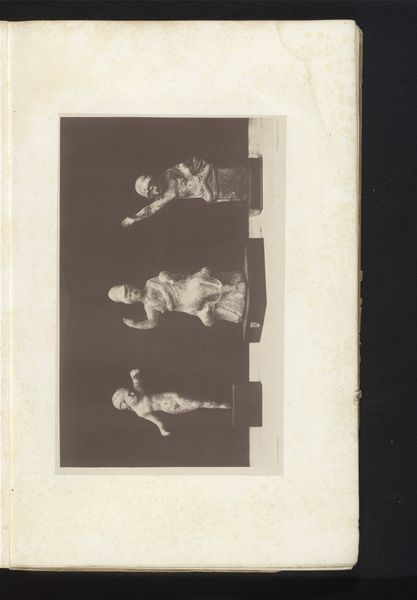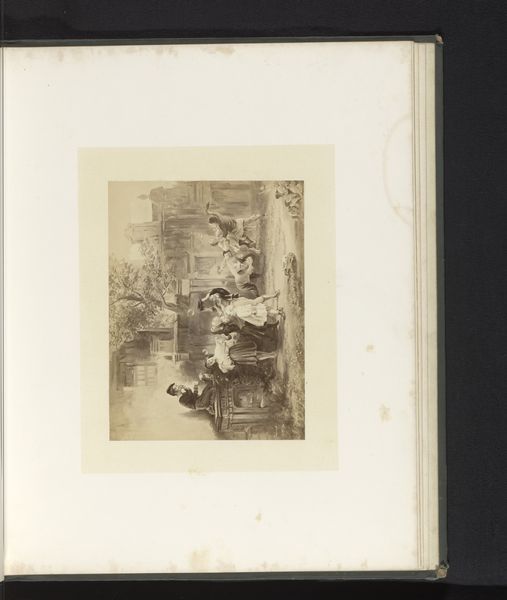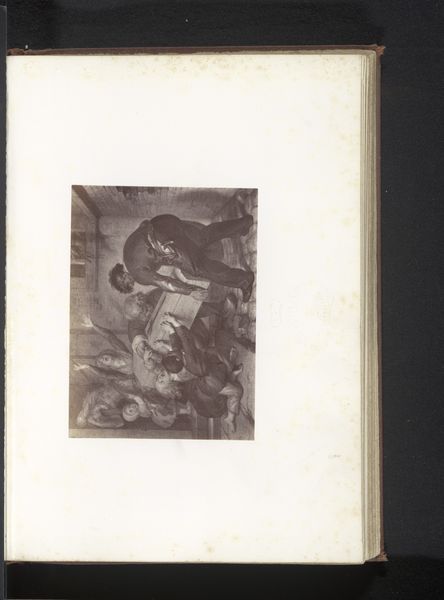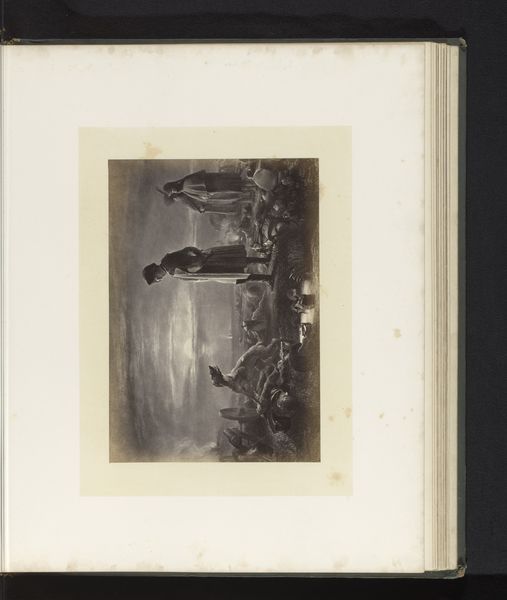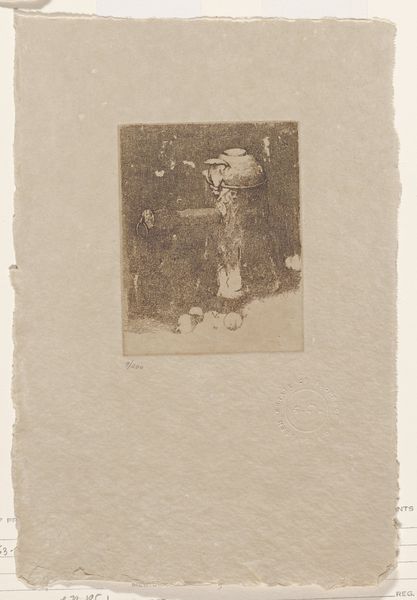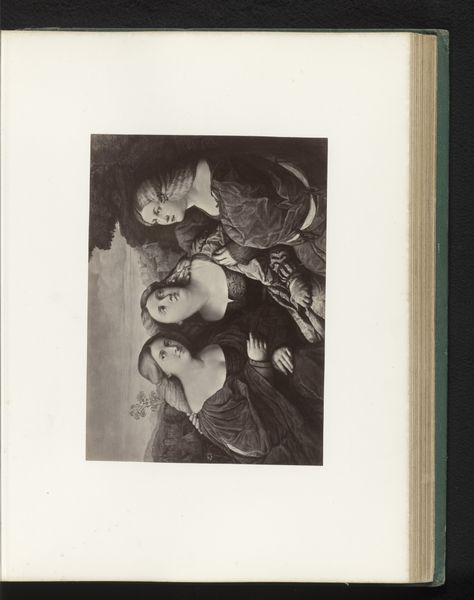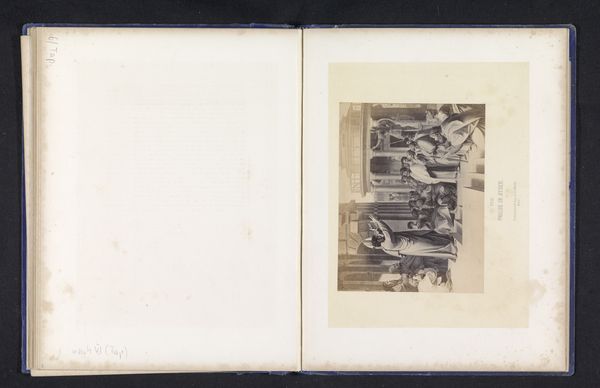
print, etching, photography
# print
#
etching
#
vase
#
photography
#
ancient-mediterranean
Dimensions: height 187 mm, width 246 mm
Copyright: Rijks Museum: Open Domain
Curator: Immediately, I'm struck by the stillness. The composition is vertically stacked, which enhances this feeling. Editor: Indeed. Let’s orient our listeners. What we have here is a photographic print dating to before 1874, entitled "Two lekythos vases and an oenochoe." This image offers us insight into how ancient Greek artifacts were being documented and perceived during the late 19th century. Curator: Yes, and it is the contrast in texture that immediately captures my attention: the smoothness of the vases themselves, the delicate painted figures on the pottery, set against the paper's grainy surface... I find it aesthetically quite appealing. Editor: What interests me most is the rise of photographic documentation during this period, a direct parallel to the burgeoning field of classical archaeology. We have three distinct forms represented here. Did each vessel carry a specific cultural function? Were these used in burial rituals, or during festive communal drinking? Curator: Exactly! It makes me question: what did they drink out of these? Do you know, it seems strange seeing them lined up like this as if specimens...It’s as if they've lost their intended context altogether, becoming items on display, and yet there’s an enduring aura. What stories could these tell if only they could speak? Editor: The very act of photographing them flattens their original function. It is also worth pointing out how photography played an increasing role in constructing visual typologies. Curator: I hadn’t considered the role of photographic image reproduction. The very fact of preserving a slice of everyday antiquity speaks volumes about the cultural appetite for visual information. Editor: I think you’re right; through analyzing the placement of these artifacts within photographic contexts, we reveal both intended and unintended insights of the long departed Grecian classical influence on later modern values. It certainly presents the objects for public access and preservation, at the very least. Curator: Perhaps by embracing both perspectives, both the formality of its shape and historical weight, it creates the unique viewing experience.
Comments
No comments
Be the first to comment and join the conversation on the ultimate creative platform.
